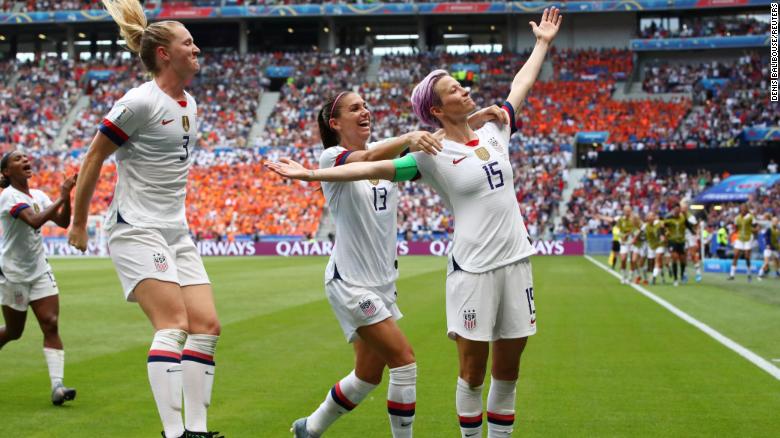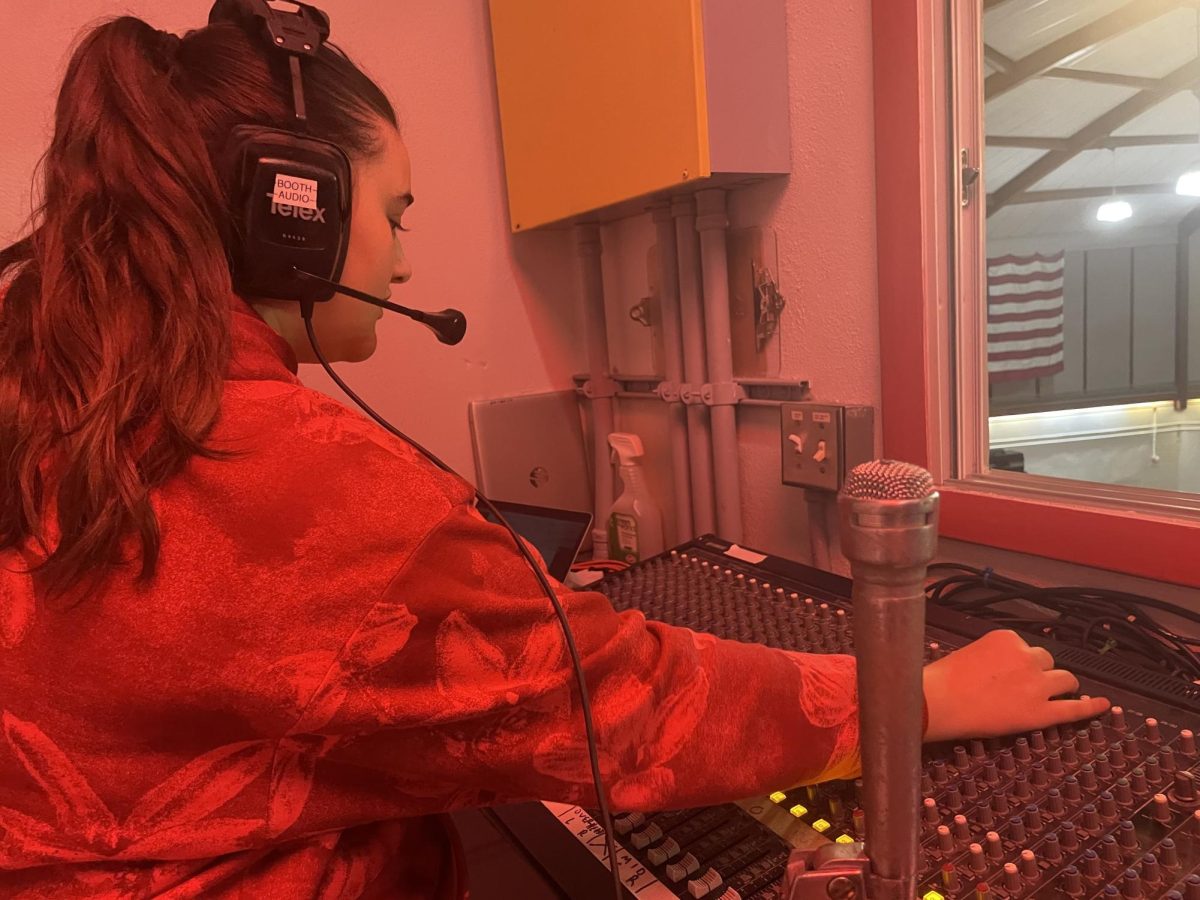The United States National Women’s Soccer Team is the Best in the World. It’s Time to Pay them like it.
Megan Rapinoe triumphantly celebrates with her teammates after scoring a goal in the 2019 Women’s World Cup.
Jul 19, 2019
When Alex Morgan, a star striker on the United States Women’s National soccer Team (USWNT), cinched a timely goal in the 31st minute of the England vs American World Cup game, she sipped tea.
Miming the traditionally British action for a few seconds after solidifying the American team’s lead over a formidable rival, Morgan could not have been prepared for the backlash that was unleashed over the following days. But instead of cowering in the face of critics, Morgan took the opportunity to call out the double standard that still persists in the world of athletics – something the USWNT has been doing since day one.

Alex Morgan mimics sipping tea after a goal-scoring header in the England vs America world cup match on July 7.
The audacity of the USWNT to take on normalized injustices has extended to their lawsuit of the US Soccer Federation for equal pay – an action was not only justified, but necessary. In the weeks following the victory of the USWNT over the Netherlands for back-to-back World Cup titles, it is time to not just appreciate the greatness of these ladies, but to treat them with the respect they deserve. After facing unprecedented challenges getting to where they are today and earning their place as the best in the world, the USWNT deserves to be paid equally for their hard work.
So what is the pay gap between the two American teams? According to the lawsuit filed against the US Soccer Federation, although the USWNT generates more revenue to the US Soccer Federation and has earned more international titles, the players earn $4,950 per game as compared to the men’s $13,166. This means that the female players maximum salary is $99,000, while the men can earn up to 263,320 in an undefeated season.This disparity has long existed in the sport, but it took until 2019 for the USWNT to legally challenge it, filing a gender-based discrimination lawsuit against the United States Soccer Federation in early March.
Like soccer players worldwide, the women on the World Cup team have spent their entire lives earning their reputation as the best of the best. Leading scorer Megan Rapinoe, for example, took up soccer at the age of three, and has been playing for over three decades, working her way up from her hometown club to professional and international teams. Much like the men who compete at the international level, these women have sacrificed their free time and social lives to completely dedicate themselves to their sport. They are no less dedicated, no less trained, and no less capable than their male counterparts.
“The American team really showed off their skill and strategy in the World Cup final. They maintained possession while getting in some excellent shots on goal, and fought every minute of the championship game,” junior Karina Leon said.
The women that lead the world in soccer have also had to deal with the belittlement of their sport; women’s soccer has been given far less attention than men’s both in the United States and around the globe. It can be seen by the numbers. FIFA, for example, allocates $30 million dollars prize money to the Women’s World Cup, as compared to the $400 million given to the men’s. It can also be seen by the actions of the international soccer community – two other men’s tournaments (Copa América and Concacaf Gold Cup) also played their final games on the day of the Women’s World Cup final, a subtle jab at the most important women’s game of the year.
In the past decades, respect for women’s soccer has been built essentially from the ground up. Yet the success of the USWNT has been beyond their fans’ wildest dreams. They are ranked number one on women’s soccer worldwide, boast four World Cup titles (including that of the first Women’s World Cup in 1991), four Olympic gold medals (including the first Olympic women’s soccer tournament in 1996) and eight CONCACAF Gold Cups.
The 2019 Women’s World Cup final, even with contesting finals of other tournaments scheduled on the same day, had 14.3 million viewers as compared to the 2018 men’s final with 11.4 million viewers, according to FoxNews. Contrary to the belief that women’s soccer players are paid less because of a smaller audience, the 2019 World Cup proved what is possible in terms of viewership and popularity of the sport.
Of course, unrivaled greatness should not be a requirement for equal treatment. Even if the USWNT were the ones failing to qualify for World Cups, as the USWNT did in 2018, they would still deserve every dollar of potential earnings as the men were granted. But the superiority of the USWNT over its international rivals just highlights that the issue of pay is not centered around how “good” the teams are – it is reflective of how women’s soccer, and those who play it, are still treated with less respect.
The simple request for equal pay should never have made it to a court case – assuming it always existed, it could have easily been corrected when the USWNT first filed an official complaint on the topic in 2016. The superiority of the USWNT on a global stage, as well as their ability to overcome barriers in their sport, has proved them to be more than worthy of the same salary as the other American national team.
However, if it has to be won by lawyers and TV segments and endless days in courtrooms, it can and will be. Sooner rather than later, the USWNT will be paid what they have earned, not only for the national players themselves, but for the Americans that chanted “equal pay!” during the World Cup final, the young girls involved in athletics nationwide, and all the legendary female players that will play for their country in years to come.













